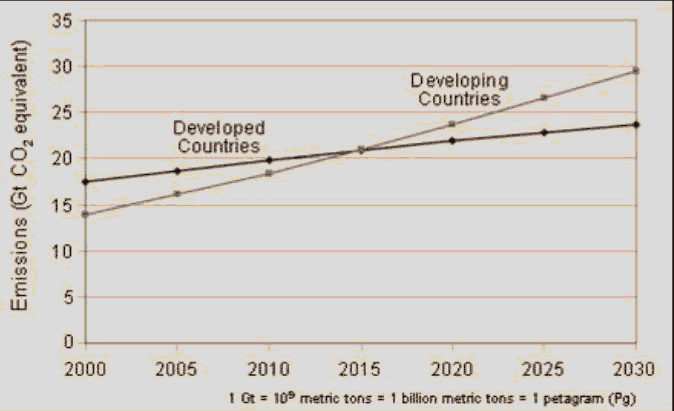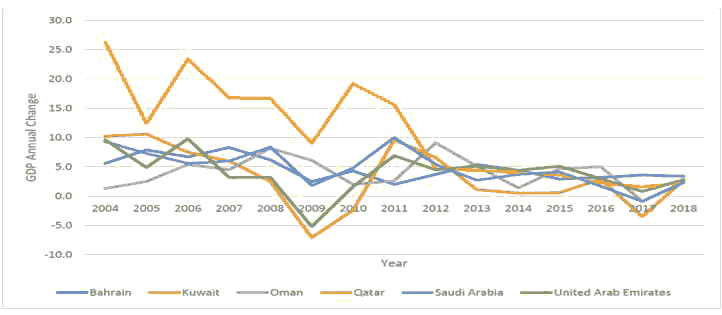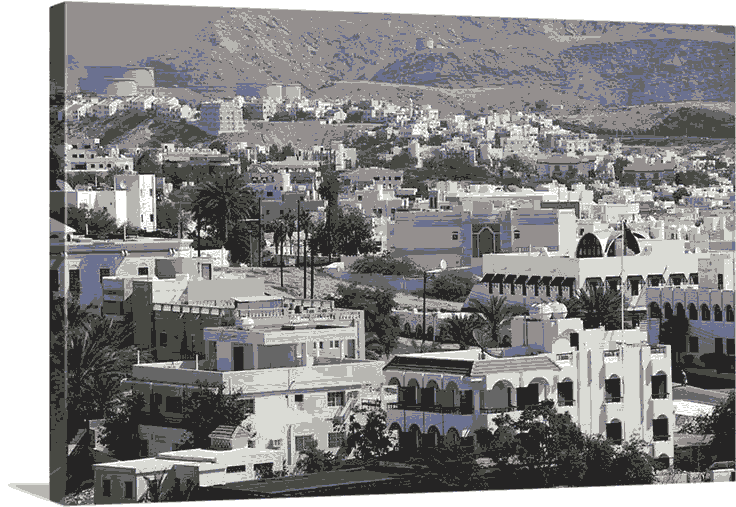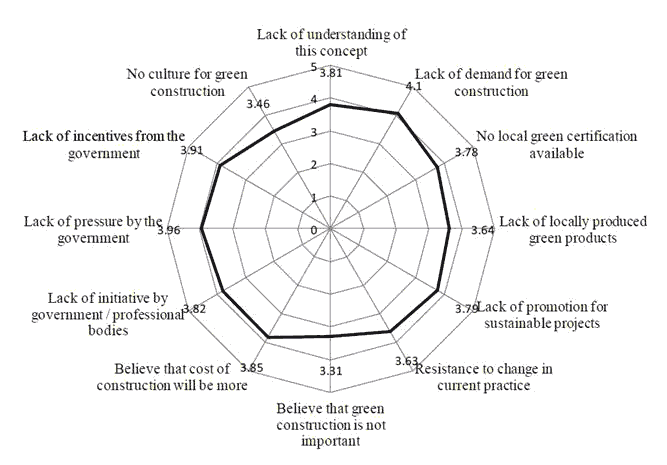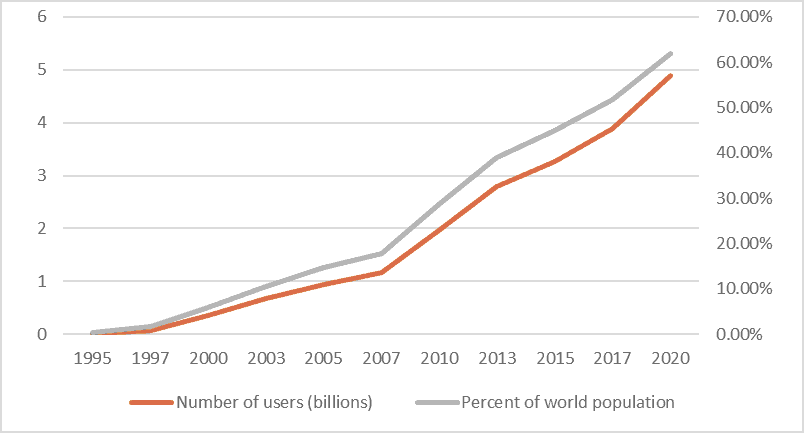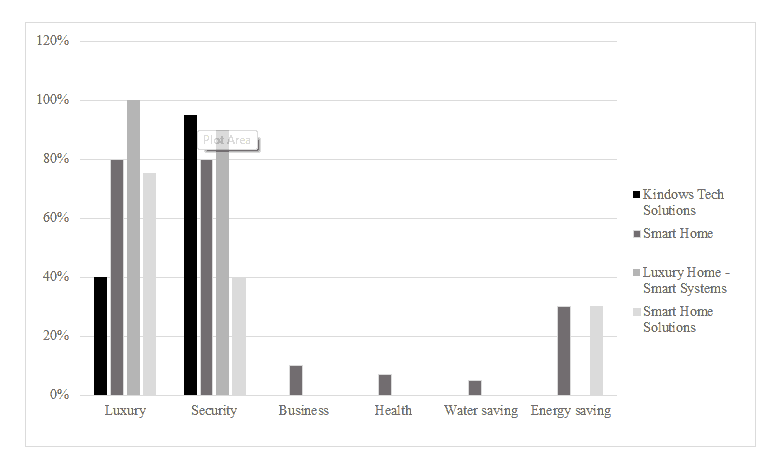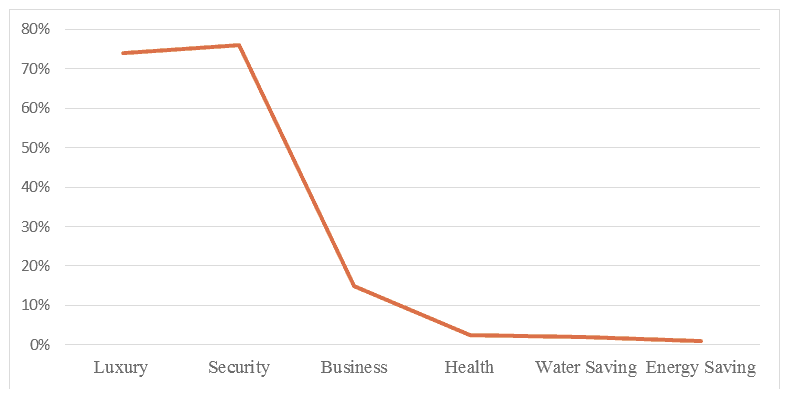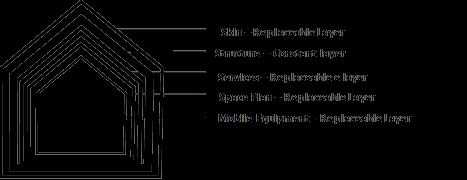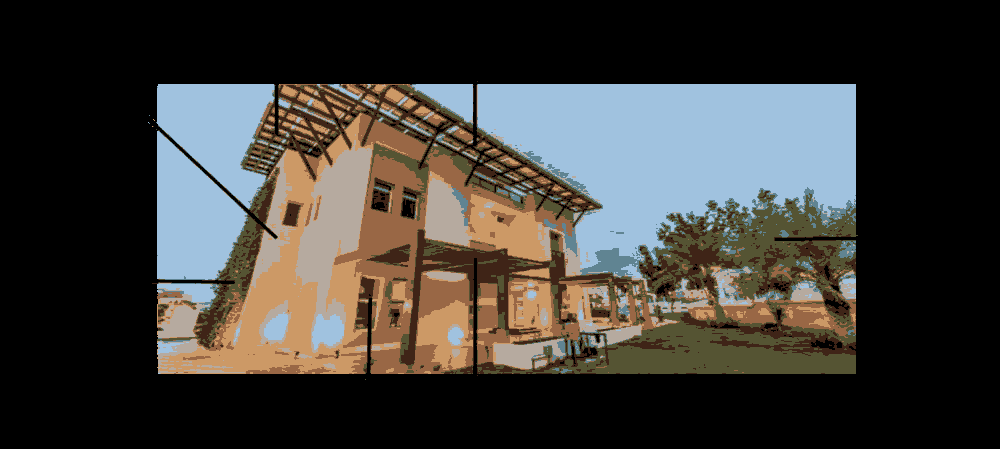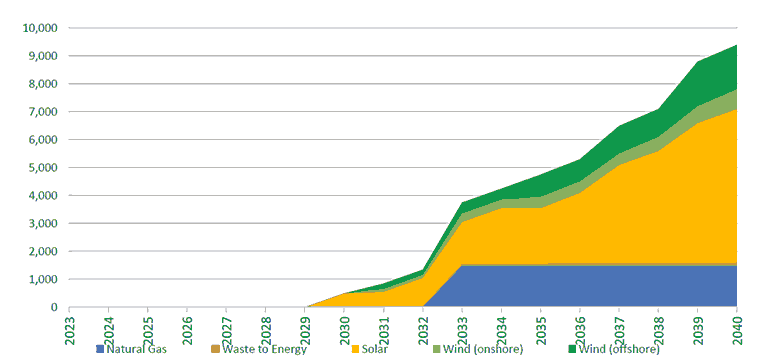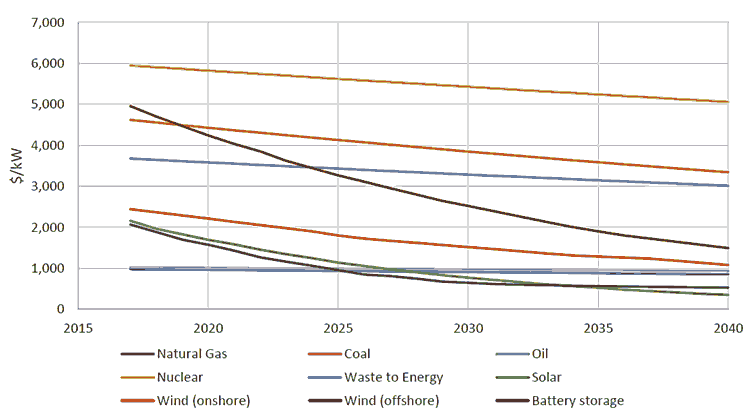Research Article: 2021 Vol: 24 Issue: 1S
Smart-Eco-House in Oman as a Key Component of a Sustainable Future- Field Study
Soheir M. Hegazy, Scientific College of Design
Abstract
The recent drop in oil prices has leads Oman, a country with an oil dependent economy, to consider new sustainable policies and attitudes. The Sultanate’s five-year plan (2011-2015) began the development of renewable energy and environmental protection. One of the state’s approaches was hosting the National Eco-House Design contest in 2011 between higher educational institutions. However, disseminating the eco-house concept will take decades to be effective. This commentary argues for the potential of the Smart -Eco home to provide a quick and effective solution to support the present nationwide policy of promoting more sustainable practices. Based on relevant literature review, a questionnaire was written, and interviews were conducted with high ranking government policymakers and directors of smart home companies. The paper aims to draw the attention of the government, experts, decision-makers, and educational institutions to integrate the Smart – Eco house into their efforts towards efficient building energy performance, supporting the national economy, energy infrastructure, and part of the country’s environmentally sustainable policies.
Keywords
Home Automation, Energy Efficiency, Sustainable Construction in Oman, Sustainability in Existing Buildings.
Introduction
In recent decades, global awareness of environmental issues and the desire for sustainability have become increasingly popular (Udomiaye, 2018; Ragheb, 2016). It is estimated that building construction consumes 40% of the world’s energy and are responsible for around one third of all greenhouse gas emissions. The United Nations Environmental Program projected in the year 2008 that these numbers will double by 2030 as shown in Figure 1 (Udomiaye et al., 2018).
Accordingly, the world realized that sustainable and green eco-friendly architecture is the ideal model to be adopted. This model provides social, environmental and economic benefits. From the economic perspective, a considerable amount of money spent on energy and water is saved. From the environmental perspective; natural resources are conserved, and pollution is reduced. Socially, the decreased reliance on the infrastructure frees up money and resources to be spent on people’s quality of life (Ragheb et al., 2016).
From 1970 till 2018, Oman’s population has raised dramatically from 500 thousand to 4.65 million. In addition, the country developed from rural settlements reliant upon fishing and agriculture to an urban society with 83% of the population living in cities compared to 15% in 1970. The discovery of oil was what fuelled those dramatic changes. 1 However, all those dramatic changes also had a dramatic impact on the environment. Concrete air-conditioned buildings, which consume 70% of all the electricity in Oman, were the most common type of building, which is not surprising given the fact that Oman has a hot arid climate where the temperature reaches 50°C in the summer, but it still represents one of the biggest challenges facing the nation. Furthermore, the rapid expansion of urban development and the rise of private car ownership made Oman one of the biggest greenhouse gas polluters in the world per capita (Hegazy, 2018). But in recent decades, the country has pledged to do more to protect the environment along with the rest of the international community. The country signed the Paris agreement of 2015 to achieve no net carbon emissions1. Moreover, the decline of oil prices during the last couple of years and the impact that had on the state budget compelled the nation to adopt new sustainable practices in both the construction and energy sectors. The 5-year plan of 2011-2015 included environmental safeguards, renewable energy investments and energy conservation. Accordingly, the Research Council started to disseminate the concept of green and sustainable architecture by announcing a contest for an Eco-House Design among the higher education institutions. Five houses were designed by the students and built on university campuses in three governorates, including Muscat the capital (Hegazy, 2018). Furthermore, as part of Oman Vision 2020, the government has invested in mega-scale infrastructure projects that use green building materials and sustainable construction practices (Safinia et al., 2017). Moreover, some local and foreign academics, experts and high-ranking employees in Oman started non-profit organizations to promote the concept of sustainability and raise environmental awareness. 2
In line with those new polices, the biggest state owned oil company in the country, Petroleum Development Oman, built a brand new solar power plant and will soon have the plant fully operational.3 However, the effectiveness of those plans are still very limited, as the total number of existing and planned green and sustainable buildings is less than twenty2, and the utilization of sustainable attitudes in construction is still facing significant challenges (Safinia et al., 2017). In addition, since Muscat the capital has 80% of its buildings already built2, the outcomes of adopting sustainable and green attitudes in new buildings will be very marginal. Since those challenges do not have one straight forward solution, the country needs new and more realistic ideas. 3
This paper’s main hypothesis is that converting existing homes into smart homes will be a more effective strategy for saving energy and attaining one of the Sultanate’s strategic priorities: sustainability. Briefly, smart home features could reduce the energy consumption of a typical house by up to one third (Rosslin & Tai-hoon, 2010). However, this commentary also highlights the inherent challenges in smarting homes in Oman and getting homeowners invested in the energy saving features. In recent years the smart home concept has been gaining traction worldwide, in the US it is estimated that by 2021, 28% of all homes will be smart homes (Paxton, 2017). In Oman, despite not yet having any accurate statistics, two of the first smart home companies out of around ten confirmed that the average rate of smarting home buildings in Oman is 100 per year 4, 5 which represents a very modest figure given the sultanate’s population of 4.65 million.
Moreover, the idea that a smart home only provides better security, relaxation, convenience, luxury, and a sense of modern living is still the prevailing belief among the people of Oman4, 5, 6. Thus utilizing smart homes in Oman as an effective and realistic tool to achieve the country’s strategic plans of a sustainable future requires intensive efforts from government, municipalities, law makers, policy makers, educational institutions, media, and others. This paper aims to propose this perspective of including the smart house as an effective tool for achieving sustainability strategies for the sultanate or other regional countries facing the same circumstances. Further research is needed to tackle the said approach.
Literature Review
During the past couple of years, books and publications about smart homes have started to become popular. Almost all the books aimed to introduce the concept of home automation to the people from different perspectives. In brief, some publications tried to clarify the benefits, services and advantages of home automation (Patrick, 2017; Juniper, 2018). Others discussed in detail the steps of home smartness; (Buchanan, 2020; March, 2016; Vandome, 2018). In addition, some publications indicated the requirements to update homes into smart ones; (Howe, 2018; Young, 2019).
Recent Adoption of Sustainable Policies in Oman: Practices and Assessments
The Sultanate of Oman went through periods of prosperity throughout its history- as far back as the fourth century B.C. - intersecting with periods of stagnation. During the last century Oman was a listless and closed country. In 1970 under the successful leadership of Sultan Qaboos Bin Said, the country started a period of unprecedented rapid development and became a modern society thanks to the oil revenue (Hegazy, 2018). The government rushed ahead with mega infrastructure plans to keep up with the rapid population growth, fast urbanization, and higher income standards. Between 2012-2016, the number of infrastructure projects has increased by 9.4% annually. At the same time, a dramatic increase in water demand, energy consumption, and CO2 emissions per capita was observed, as no consideration was given to the environment at the time (Powmya & Abidin, 2014; Safinia et al., 2017).
Current Natural Resource Challenges
Faced with many environmental challenges, the government started to look to the long term and reconsider the management of its finite resources. Since 2004, and despite having more consistent Gross Domestic Product (GDP) numbers compared to other Gulf Cooperation Council (GCC) states, the country saw its economy shrink in 2017 as a consequence of continued low oil prices (Figure 2).
The shift from a rural to an urban society that was mentioned in the introduction resulted in greater land use demand for residential buildings, transportation, utilities, and infrastructure (Figure 3). Accordingly, the land area available for agriculture is shrinking, while 75% of the country’s area is desert land. In addition, the sultanate of Oman recently experienced a water shortage where irrigation-heavy agriculture depleted several aquifers. Furthermore, the prevailing pattern of urban dominions is a freestanding villa per family surrounded by gardens, which increases overall energy and water consumption, requires longer roads to serve the same number of people, and discourages public transportation leading to more private car ownership and more fuel consumption (Powmya & Abidin, 2014).
In Oman, oil exports contribute to more than 80% of the state’s revenue (Al-Wahaibi, 2019) but the cost of oil extraction per barrel is higher in Oman compared to the rest of the GCC states (Powmya & Abidin, 2014), Consequently, new policies and directives have to be taken. 4
Steps Taken for Sustainability Adoption
The Sultanate of Oman demonstrated serious commitment to environmental protection issues; it was the first state in the region to establish a Ministry for the Environment in 1984- currently known now as the Ministry for the Environment and Climate Affairs. On the other hand, in the year 2000 the first non-governmental organization with an environmental protocol was founded. The Environmental Society of Oman was established under the Royal Decree 14/2000. They have supported many environmental issues using a series of popular campaigns. In 2012, another organization - Oman Green Building Council was founded; annual seminars and conferences are held to support green orientations (Powmya & Abidin, 2014). Furthermore, the government announced that their five-year plan for 2011-2015 will include environmental protection, energy conservation, and expansion of renewable energy ventures. Accordingly, the Research Council (TRC) proclaimed the national contest for Eco House Design between Higher Educational Institutions in Oman- as was mentioned earlier. The Participating teams had to design, construct and run the projects in a phased approach. The winners of the first phase have been announced and the second phase is currently underway (Hegazy, 2018). Moreover, throughout the past twenty years, the government has implemented an agenda for environmental conservation across the country’s vulnerable ecosystems. In addition, the region’s biodiversity has been preserved and National Parks have been upgraded to provide visitors with a variety of entertainment amenities1.
Furthermore, the government has taken vital action in supporting the renewable energy sources. The previously mentioned state-owned oil company PDO erected a $94 million photovoltaic power plant over an area of 4 km3 in the south of Oman which produces 100 Megawatts of electricity daily, enough to power 15,000 houses. This represents an annual decrease of 225,000 tons of CO2 emissions. The project is one of the world’s first solar plants that produce energy for oil and gas extraction as the PDO is the single purchaser of the produced electricity. The plant is scheduled to start commercial operations in 2020 (Al-Wahaibi, 2019).
An Evaluation of the Current Sustainable Attitudes in the Sultanate- The Construction Domain
In spite of the said efforts and attempts of upholding sustainable construction in Oman, it is still currently a nascent concept. Only 14 LEED certificates were given to sustainable buildings out of 38 applicants (Green Building Information Gateway, 2020) compared to the neighboring GCC country, the United Arab Emirates, which had 1083 LEED certificates given in the same domain (Green Building Information Gateway, 2020). A few years ago, two researchers carried out a survey amongst construction practitioners in the Sultanate of Oman to identify the barriers preventing the application of green approaches in the field. 5 Based on quantitative and qualitative analysis of 67 responses the following information was obtained; twelve obstacles have been identified, they are listed here in descending order: a lack of requests for green buildings, insufficient push by the government, inadequate incentives by the government, cost effectiveness, scarcity of actions taken by the government, obscurity of green concepts, insufficient promotion of sustainable ventures, unavailability of local green certificates, lack of local green materials production, opposition to changing existing practices, lack of green building culture, and finally, the belief that green buildings are not important (Powmya & Abidin, 2014). Those factors are presented in Figure 4 as follows:
Later another questionnaire was prepared by a group of researchers about the weak employment of sustainable materials in Oman and it was shared with stake holders in the construction domain including; government employees, contractors, and consultants. Among thirteen identified factors which limited the efficient utilization of the sustainable materials in the construction domain, the following three barriers were ranked the highest: a lack of sustainable construction culture and low demand, the high price of green structural materials, and finally the lack of available data on green material performance (Safinia et al., 2017). Moreover, one of the most challenging factors of sustainable practices is the fact that the government subsidizes the cost of electricity, fuel, and water, along with other GCC states, dramatically speeding up the exhaustion of those resources. These subsidies have made renewable energy sources more expensive than their non-renewable counterparts (Powmya & Abidin, 2014). Furthermore, there is still no vision to expand the life cycle of construction material by adopting recycling practices; there is not a single recycling plant in the country. The practice of ignoring waste treatment negatively impacts the speed of adopting sustainable attitudes in the Sultanate of Oman (Marques & Loureiro, 2013).
Home Smartness Concept Area Of Applications And Effectiveness
A smart home can be defined from many perspectives; the following definition is a comprehensive one which goes in line with the research:
“A smart home is a residence equipped with a communications network, linking sensors, domestic appliances, and devices that can be remotely monitored, accessed or controlled and which provides services that respond to the needs of its inhabitants. (Balta-Ozkan et al., 2014)”
The development of a smart home could be tracked from two categories; the technical support system and services provided.
Brief History of Home Automation Technological Support System - Technical Perspective
The mass market of smart home productions started in 1975 as a Scottish firm introduced the X10 system which enables compatible appliances to communicate to each other via existing power cables (Edmonds & Chandler, 2008). However, X10 had some major noise and reliability issues and sometimes would not work at all (Rosslin & Tai-hoon, 2010). More advanced systems include the Z-Wave and Zig bee. The two mesh network technologies depend on the Internet of Things (IOT) to communicate instead of power lines. The data sensing appliances included radio Frequency Identification Devices (RFID), GPS, infrared sensors and laser scanners (Li & Yu, 2011). 6 Accordingly, commands have more than one path to the requested devices. Although the intent was to provide flexibility via the wireless grid’s ability to connect more appliances, the same as electrical cables, the connection process was confusing and difficult. Another platform, Tsteon, is able to communicate using both radio waves and electrical wires as a dual grid. (Balta-Ozkan et al., 2014) In the first decade of the 2000s, new models of IOT have been developed; cloud computing and sea computing made IOT appliances more customizable to fit the users’ requirements and adapt to different environments. Another more practical and affordable platform is ‘Anything as a Service’ (Xaas) that places the software and computational resources in the cloud, thus saving the user from having to set it up on their PCs. Consumers can utilize, rather than possess, communication technology and data via a pay-on-request system (Udomiaye et al., 2018).
Smart Home- Provided Services Development
In 1930s, the prelude of home automation in the United States started to take shape. Initially, the futuristic vision of a smart home, which provides contemporary flavour life with unmatched luxury, standard entertainment, indulgence and adequacy, was dominant. It took fifty years for those concepts to be commercially viable when computers became more widespread and automated devices were invented (Darby, 2018). Obviously, the initial concept of the smart home was to provide an extra fancy, deluxe, comfortable, and personalized home ambiance. Then, the mentioned vision started to have another track, to create real value. Smart homes must tackle living challenges rather than just linking a group of home appliances together (Paxton, 2017). Safety services started to be an integral part of home automation. Security equipment like smoke detectors, window glass breaks infrared detectors, motion sensors and cameras enabled the owner to monitor their family and home anywhere at any time. Moreover, the mentioned appliances could be connected to the police or fire departments directly. In addition, medical devices like a sphygmomanometer with IOT technology can keep track of family members’ health condition and directly contact the nearest hospital in case of any emergency. Moreover, adults can monitor the condition of their kids or parents. Other business services also started to be available via home automation; family business, shopping, bill payments, and even home appliance maintenance. Those mundane tasks could be done more efficiently and save people time and energy (Li & Yu, 2011).
Smart Home as a Key Role in Sustainability
Recently a more pivotal shift of the smart home concept took place, it aimed to provide more services to the inhabitants and also to preserve the environment for the sake of the nation and even the entire world. Since energy consumption is considered the main factor in constructing sustainable buildings (Marques & Loureiro, 2013). The integration of renewable energy sources started being a priority for home smartness, linking energy management appliances like smart lighting order or smart thermostats enabled the users to save energy consumption (Paxton, 2017). For example, some appliances could enter a low power mode at certain times of the day according to demand, spaces could be cooled or heated according to the number of occupancies, and lights are turned on or off automatically according to motion sensors (Rosslin & Tai-hoon, 2010). Information on energy consumption and the relevant money paid per month could be shown on screens of smart appliances (Darby, 2018), and so on. One lady posted that her electricity bill was reduced by approximately one-third than the similar-sized residence. Saving water could also be achieved by water tap sensors and agricultural sprinklers (Rosslin & Tai-hoon, 2010).
Moreover, another important aspect of sustainability, climate issues and environmental control, could be achieved via home smartness. Smart homes could be equipped with a variety of ICT products which enable communication between city houses to optimize the electric grid’s supply between high and low demand areas. Heat pumps, heaters thermal catchers, batteries, photovoltaics could be used as storage appliances during low electricity demand times. The Building Performance Institute Europe (BPIE) recorded an example of Belgian neighborhoods. Customers may opt in to turn off some appliances at peak demand times for a reduced tariff according to prior agreement with the electricity company. This process is called “Demand Response” (Darby, 2018).
More of the sustainability potential of smart homes can be realized by installing solar panels. Using solar energy could transform houses from energy consumers to energy producers. The excess generated energy could be sold back to the national power grid for monetary compensation (Hegazy, 2018).
The Possibility Of Integrating Smart Homes With The Sultanate’s Sustainable Attitude - Field Study
Smart Home- Current Situation in Oman
Home smartness is commonly dependent upon Wi-Fi providing data transfer between appliances and users’ control devices. Accordingly, the development of the internet users indicates the availability of providing homes with IOT technology (Witthayawiroj & Nilaphruek, 2017). There are no available published statistics about the expansion of rate of Internet users in Oman. However, looking at the global trends shown in figure 5, it is reasonable to assume that the number of internet users in the country has gone up significantly.
Due to a lack of published information on this topic the author conducted a field study and interviewed five companies’ representatives working in home smartness field in Oman, the total number of companies working in that field is around ten. The home automation process started in Oman around the beginning of the year 2003. At the beginning, the main customers were mainly wealthy people, and home luxuries were there their main demand. However, during the past couple of years, security became very popular with a growing base of middle class users 5, 6, 8. Yet, luxury was still the top concern 4, 5, 6, 7. One participating company in the field study with a low number of customers per year, less than 10, was excluded as a source of information for the statistics. Based on the data given by the other four, the following chart was prepared (Figure 6).
Figure 6: Main Omani Customers’ Requirements For Home Smartness-Based On Participated Companies In The Field Study
Another chart was created to summarize the said data gained (Figure 7)
Unfortunately, energy saving had very low representation and it was not even being offered by two of the four companies. In addition, all the other advantages of the home automation like shopping, bills, business, health issues and saving water were either completely absent or modestly represented. With no official statistics, the author tried to get an approximate percentage of Omani smart homes of the overall households based on the collected field study information and relevant published statistics of the total population in Oman is 4,494,537 with 39.3% of expatriates (National Center for Statistics and Information, 2020). The round figure of home smartness projects executed during last year by the five involved companies in the field study; Kindows Tech Solutions, Smart Home, Smart Home Solutions, Luxury Home Smart Systems, and Smart Home and Security - Sharf Do. Are respectively 85, 70, 30, 10, 3 with a total of 198 per year. Assuming that the five companies represent 50% of the total number, the total figure will be 396 per year. With reference to the five participating companies, more than 99% of their customers are Omanis 4, 5, 6, 7, 8. Statistics show that the number of Omanis is 2,730,236 and they have an average of 3.9 children per family (National Center for Statistics and Information, 2020). Accordingly, the number of Omani households is around 700,061. This means that the current rate of home smartness in Oman is around 0.06% per year. 7 Compared with a current annual increase of 3% of US households (Paxton, 2017). This means that the smart home in Oman is almost non-existent.
Smart-Eco House- Involving Existing Buildings in the Sustainability Plans
It was mentioned earlier that 80% of the building plots in Muscat – the Sultanate’s capital- have already been occupied, 2 existing buildings in cities should be treated as the biggest consumers of energy (Udomiaye et al., 2018). The harsh climate mentioned in the introduction necessitates using air conditioning throughout almost the entire year. Given that the existing buildings in Oman consume more than 70% of the overall electricity output in the sultanate (Hegazy, 2018). This means involving the existing homes in the sustainability plans in Oman has the potential to have a massive impact on the state’s overall energy consumption and sustainability. This paper assumes that there is a wide area of common objectives and practices between smart homes and sustainability which gives the chance to employ the former to support the latter.
As was previously discussed in detail, there was a recent development of the home smartness concept from just having luxury as the objective or saving residents from doing mundane tasks, to achieving greater energy efficiency and cost savings. The practices of electricity demand response, load shifting, energy storage appliances, smart thermostats, automatic lights and toggling air conditioners according to the occupants’ movement and smart energy appliances were clarified in point 4.3. Moreover, adding some practices and aspects of sustainable and eco-friendly home design will help a lot in home energy saving- which has been recognized as a major sustainability factor (Powmya & Abidin, 2014) in line with the sustainability plans and objectives- The mentioned assumption includes some key factors discussed below.
Energy Alternatives
From a sustainability perspective, the biggest impact that homes have on the environment is the expended energy throughout their life span. Energy is a necessity to all houses for air conditioning, electrical equipment, and lighting (Hegazy, 2018). Providing existing homes with renewable energy sources, mainly solar panels, will help the Sultanate to respond to the rapidly increasing energy consumption of 8 to 10% per year (Powmya & Abidin, 2014). The Sultanate has the advantage of available sunshine year-round. Moreover, these panels cast some shade on the roofs- which are otherwise constantly exposed to the sun. Thus, they will significantly decrease heat penetration and provide a passive cooling effect. Other renewable energy sources were included in the Government plan “Oman 2020-2040” which will be discussed in the next point. On the other hand, replacing the lighting units with energy efficient alternatives such as LED lamps will result in a considerable energy savings (Hegazy, 2018).
In the following points, it is important to consider thinking of the house as a multi-layered item (Figure 8). In most cases the essential construction is the longest lasting layer (50 years on average), whereas the rest of the layers require maintenance and replacements over shorter intervals (Marques & Loureiro, 2013).
Building Facades
Studies have shown that a space with an insulated roof and walls gains 50% less external heat (Hegazy, 2018). Wall insulation could be provided with a variety of approaches, a green wall could shield the building facades with vertical green plants. It can be applied in many different ways such as modular Green Walls, Hanging-down Green Walls, and Wall-climbing Green Walls (Ragheb et al., 2016). The Ministry of Agriculture and Fisheries can propose and provide suitable low-cost native types. Another approach is a Cavity Wall; thick walls have a considerable “time lag” thermal ability. This postpones the transmission of heat from outside to the inside (Hegazy, 2015). Considering that the external walls are the biggest exposed area of a building (Ragheb et al., 2016), adding another layer to the building with additional empty space filled with insulation will help tremendously in reducing heat penetration (Hegazy, 2018). From a sustainability aspect, the second layer material has less embodied energy; a concept which started in the US where the production process of any material is calculated as the total energy consumption of extraction, transport, production, and the building procedure (Marques & Loureiro, 2013). Previous studies have indicated that the Sultanate has a variety of by product and waste materials such as; destroyed concrete, copper refuse, repaired asphalt paving aggregate, cement by-pass powder, oil polluted earth, crematory dust, old tires, and others. Despite the fact that waste management and recycling are not yet implemented in the Sultanate (Powmya & Abidin, 2014), it is being considered in future plans as will be clarified in the next point. 8
External Openings
Adding simple features like double glazing, shading elements, will help to block the sun rays on windows which effectively reduce heat penetration (Ragheb et al., 2016). Moreover, through regular maintenance, the homeowners could be encouraged to replace their home windows with triple glazed ones, which were rated by the national authorities in the UK as an eco-home feature. Other passive solar techniques could be added to reduce solar gain through windows like using double glazing with inert gas in between glass layers (Krypton, xenon, or argon) while providing a gap of 16mm between the two panes. In addition, the outer pane could be coated with a low-emissive layer which aids a lot in reflecting heat (Hegazy, 2018).
Home Garden
As was mentioned earlier; the villa with a surrounding garden is the most common dwelling in the country (review figure 3). With the help of the Ministry of Agriculture and Fisheries experts, trees could be selected and strategically planted to sufficiently cast shade on the house facades which minimizes energy consumption via natural insulation. Specific native trees such as creepers and climbers, in horticulture will be essential (Udomiaye et al., 2018). Considering the local temperature, prevailing wind, and soil type as a base for selecting the chosen plants, it will create a thriving low maintenance garden (Hegazy, 2018).
Applying the mentioned retrofits approaches to existing houses could considerably reduce energy consumption at the national level. The above discussed options are summarized in Figure 9.
Future Oman Plans - Supporting Research Track
During the past decade the Sultanate of Oman realized that it is time to evaluate its path and look for new approaches for the future1. The decline in fossil fuel revenue made the country adopt new policies, better resources exploitation, and strive for economic diversity (Hegazy, 2018). The state started to take actual actions via the five years plan; 2010-2015 and 2016-2020 in addition to Oman vision 2020-2040. Moreover, a considerable amount of research, debates, and symposia have been conducted over those issues. Moreover, the Supreme Council for Planning hired an international consultancy office-ATKINS- to prepare a report titled “Oman National Spatial Strategy (ONSS)-prepared in 2 years, 2018, 2019 in 146 pages- to be a base for Oman’s future strategies1. Since this research is supporting the interoperability of smart eco home, and Oman sustainability plans at the national scale, the future directives of the Omani government will likely support the same track as will be discussed in the following point.
Telecommunication Infrastructure
Home smartness is mainly dependent on data transfer between householders, smart equipment like smart tablets and mobiles- and appliances via Wi-Fi (Witthayawiroj & Nilaphruek, 2017). Fortunately, one of the goals in the ONSS is to secure a national coverage of telecommunications infrastructure for all houses by 2040. In 2018, a fiber-optic service supplier started to provide houses with its services with a plan to have a nationwide coverage by 2040.
Supporting Renewable Energy Resources
The ecological sensitivity’s main goal is to seek for a fruitful relationship with nature rather than human supremacy over the natural world (Udomiaye et al., 2018). Accordingly, the smart-eco home proposed by this research backs up the Sultanate’s plans for sustainability. Oman has achieved a considerable step to change its policies in the energy sector by starting the “Energy Lab” as a component of the five-year plan 2016-2020. Numerous recommendations have been made to support energy efficiency and minimize greenhouse gas emissions like; large national scale use of solar and wind projects and supporting small scale solar projects. Moreover, the ATKINS report emphasized the need for a gradual replacement of carbon emitting energy sources with the following renewables; solar energy- as the most potent renewable resource, waste to energy- as a factor of waste plan, off shore wind as an important cost reduction source, and on shore wind which represents the second biggest renewable resource after the solar energy (Figure 10).
Furthermore, as has been previously mentioned, the subsidies given from the Omani government on electricity and fuel deform energy market and affect the economic competitiveness of renewable energy sources and make them appear more expensive (Powmya & Abidin, 2014). The ATKINS report recommended reducing the price per KW of the renewables over the Oman Vision 2020-2040-time frame to be even less than the conventional energy sources (Figure 11).
Expected Amendments in the Energy Sector
It has been previously mentioned the effective role of smart home in demand management to support the electricity grid (Darby, 2018). Furthermore, the need to support the renewable energy resources via legislations and governmental incentives in Oman were included in previous points (Powmya & Abidin, 2014). The said issue was backing in the Omani government plans. One of the energy lab recommendations, as a part of the five-year plan 2016-2020 is to adopt the “Demand Response” to be employed in the electricity services to minimize demand at peak times via monetary incentives. In addition, one of the recommendations of the ATKINS report as part of Oman Vision 2020-2040 is the vital need for a green building code to be implemented in all cities to secure the usage of solar energy, proper-orientation of new buildings to maximize the solar gain, and increase use of thermal insulation materials.
Results and Findings
The outcomes of one decade of upholding a variety of sustainable and green approaches in the Omani construction domain are still very modest and facing many challenges. Since new paths have to be adopted, the smart-eco house has recognizable potentials to be a key factor in supporting the anticipation of the community with respect to the sustainability and eco-friendly approaches in Oman and other regional countries. However, the government needs to do much more to incentivise this transformation, in addition to the vital role of other stakeholders, educational institutions, media, and private sector.
Conclusion
For almost one decade, Oman has started to realize that its paths, strategies and policies have to be more sustainable to face the threats of dwindling oil prices, water scarcity, and the increase in both population and energy consumption, in addition to the “heat island effect” in cities. Since then, the main adopted policy in the construction sector- which consumes the most energy and materials- is promoting the eco-friendly new buildings. However, after one decade many challenges are dramatically affecting the outcomes of that orientation such as the high cost of eco-friendly building materials, shortage of relevant data, and frequent deficiency in recycled materials. Also, no support of green legislations, and governmental energy subsidies on electricity. Thus, indicating that the current attitude and policies are long-term plans to achieve tangible results. In addition, 80% of the construction plots in Muscat the capital have already been built and are completely excluded from the current attitudes. Accordingly, new windows should be opened. As energy saving is considered the most important aspect of sustainability, this research urges that there is a substantial potential benefit in the short-term from incorporating home smartness on a national scale with the state’s strategies of achieving the sustainability in the construction field. Automated homes could change individual houses from energy consumers to producers using renewable energy sources, demand response, load shifting, and energy storage facilities. Furthermore, this paper supports involving non-mechanical solutions as a component in the smart house under the concept of the smart eco-house. Through adding simple and cost-effective features to existing buildings, on-site treatment could significantly reduce heat absorption and thus lower air conditioning consumption. Window shades, green roofs and walls, adding a building skin, double-glazed windows, casting shades trees, adobe paints could be employed. Adopting the suggested path needs the cooperation, coordination and involvement of many stakeholders. The government has to enforce the needed regulations, reducing traditional energy sources subsidies, and increase support of renewables. In addition, the Ministry of Agriculture and Fisheries should provide the native shade trees needed. The Ministry of Energy should support spreading fiber internet and Wi.Fi. The media and Educational Institutions have to promote the concept of sustainable and green attitudes among the people. In addition, the private sector should invest in recycling materials projects and other onsite treatments. Sustainability is the future; a wide variety of paths should be adopted at the same time.
End Notes
- “The Selected Strategy towards the ONSS” report prepared by British consulting firm Atkins for the Supreme Council for Planning and obtained by the author.
- Interview with Eng. Mahmood Al Wahaibi, The Supreme Court for Planning- Urban & Infrastructure Planning Specialist, conducted on December 25, 2019.
- Interview with Eng. Saif Al Sharji, Oman Royal Court Affairs- Sector Development Manager, conducted on January 9, 2020.
- Interview with Mr. Faris Ali Al Hadi, General Manager, Kendows Tech Solutions company- Oman, conducted on February 24, 2020.
- Interview with Eng. Alaaadin Abdul Rahman, smart Home Company, Oman, Business development Manager, conducted on October 15, 2019.
- Interview with Eng. Mohamed Al Hasn, Smart Home Oman, Sales Manager, conducted on October, 15, 2019.
- Interview with Mr. Yoiusuf Ali, Field engineer, Smart Home Solutions Company-Oman, conducted August 31, 2020
- Interview with Mr. Faiz Alrawahi, Luxury home-Smart systems, conducted on September 6, 2020.
References
- Al-Wahaibi, M. (2019). Logistics hubs in Oman and political uncertainty in the Gulf. Contemporary Review of the Middle East, 6(2), 109-153.
- Balta-Ozkan, N., Boteler, B., & Amerighi, O. (2014). European smart home market development: Public views on technical and economic aspects across the United Kingdom, Germany and Italy. Energy Research and Social Science, 3(1), 65-77.
- Buchanan, M. (2020). The smart home manual: How to automate your home to keep your family entertained, comfortable and safe. Home Tech Hacker.
- Darby, S. J. (2018). Smart technology in the home: time for more clarity. Building Research and Information, 46(1), 140-147.
- Edmonds, M. & Chandler, N. (2008). How Smart Homes work. Retrieved from https://home.howstuffworks.com/smart-home.html.
- Green building information gateway (2020). Oman. Retrieved from http://www.gbig.org/places/782.
- Hegazy, S.M. (2015). Continuity and change of Muscat house - influencing factors and responses. International Journal of Advanced Research, 3(9), 95-107.
- Hegazy, S.M. (2018). Eco-friendly architecture - A prelude in the sultanate of Oman. MATTER: International Journal of Science and Technology, 3(3), 317-338.
- Howe, A. (2018). The smart home book: Simple ideas to assist with your smart home - A literature review. Andrew Howe.
- Internet Growth Statistics (2020). Today's road to e-commerce and global trade internet technology reports. Retrieved from https://internetworldstats.com/emarketing.html.
- Juniper, A. (2018). The smart home handbook: Control your home with your voice. Ilex Press.
- Li, B. & Yu, J. (2011). Research and application on the smart home based on component technologies and Internet of Things. Procedia Engineering, 15, 2087-2092.
- March, F. (2016). Echo dot and Amazon Alexa. Easy instructions, directions and commands. Little Cotton Press.
- Marques, B. & Loureiro, C.R. (2013). Sustainable architecture: Practices and methods to achieve sustainability in construction. International Journal of Engineering and Technology, 5(2), 223-226.
- National center for statistics and information (2020). Retrieved from https://www.ncsi.gov.om/Pages/allindicators.aspx.
- Patrick, J. (2017). Home attitude: Everything you need to know to make your home smart (It’s All about Attitude). Independently Published.
- Paxton, M. (2017). Smart homes in the U.S. becoming more common, but still face challenges. Retrieved from https://www.spglobal.com/marketintelligence/en/news-insights/blog/smart-homes-in-the-u-s-becoming-more-common-but-still-face-challenges.
- Powmya, A. & Abidin, N.Z. (2014). The challenges of green construction in Oman. International Journal of Sustainable Construction Engineering & Technology, 5(1), 33-41.
- Ragheb, A., El-Shimy, H. & Ragheb, G. (2016). Green architecture: A concept of sustainability. Procedia - Social and Behavioral Sciences, 216, 778-787.
- Rosslin, J.R. & Tai-hoon, K. (2010). Applications, systems and methods in smart home technology : A review. International Journal of Advanced Science and Technology, 37-47.
- Safinia, S., Al-Hinai, Z., Yahia, H.A.M. & Abushammala, M.F.M. (2017). Sustainable construction in sultanate of Oman: Factors effecting materials utilization. Procedia Engineering, 196, 980-987.
- Udomiaye, E., Okon, I.U., Uzodimma, O.C. & Patrick, N. (2018). Eco-friendly buildings: The architects perspectives. International Journal of Civil Engineering Construction and Estate Management, 6(2), 14-26.
- Vandome, N. (2018). Smart homes in easy steps: Master smart technology for your home. In Easy Steps Limited.
- Witthayawiroj, N. & Nilaphruek, P. (2017). The development of smart home system for controlling and monitoring energy consumption using WebSocket protocol. IOP Conference Series: Materials Science and Engineering, 185, 14-16.
- Young, C. (2019). Smart home: Digital assistance, home automation and the internet of things (Our Internet of Things). Independently Published.
